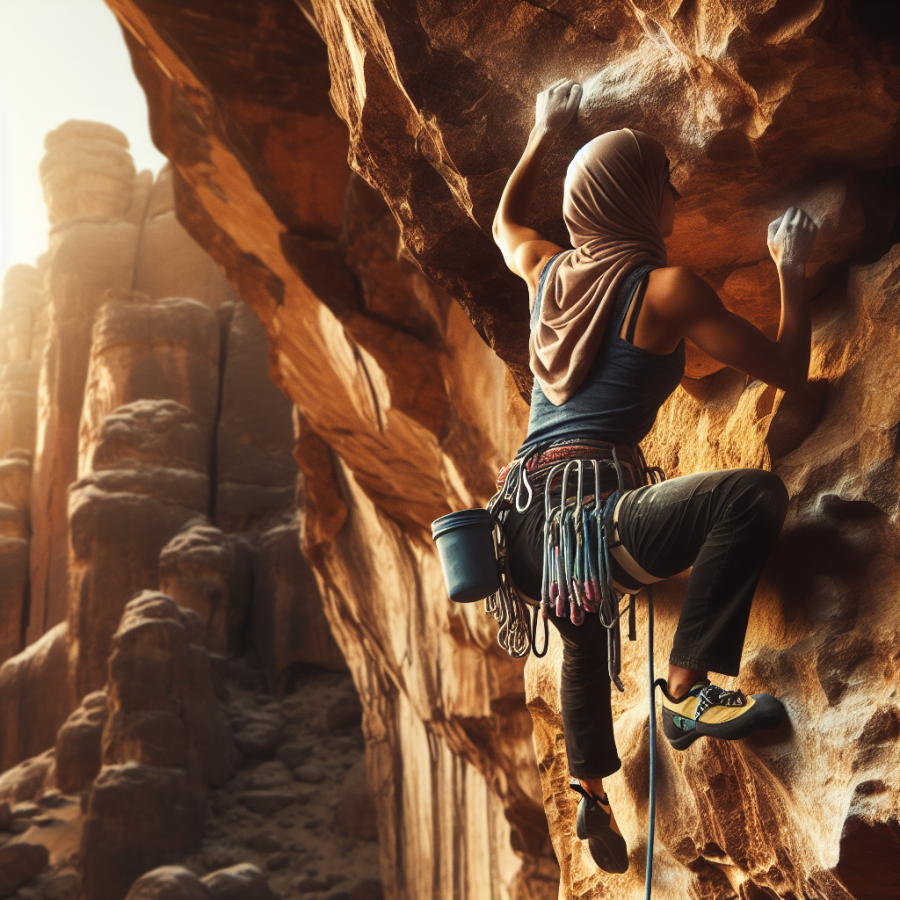Embracing the Solitude: The Unique Challenges of Solo Summit Ascents
In the journey of a solo climber, ascending to the summit of towering mountains, there lies an untapped realm of challenges and rewards distinct from those experienced in group expeditions. The pursuit of a solitary summit not only demands exceptional physical preparedness but also an unshakeable resolve and profound self-reliance.
One of the most formidable challenges faced by solo climbers is the profound sense of isolation. Unlike group climbs, where camaraderie and collective motivation can bolster one's spirit, the solo climber must draw on their own mental fortitude. This solitude can become a formidable adversary, particularly when faced with the daunting silence of the high-altitude wilderness. The absence of human voices and the unrelenting presence of one's own thoughts can lead to introspection, self-doubt, or even a heightened sense of vulnerability when confronted with the raw forces of nature.
The mental resilience required for solo summit ascents is as critical as physical strength. Climbers must be adept at managing their emotions, maintaining focus, and making prudent decisions when fatigued. Strategies such as meditation, visualization of the climb, and maintaining a routine can form a mental scaffolding from which solo climbers derive stability and confidence.
Another unique challenge is safety. With no partners to assist in case of an emergency, solo climbers must be prepared to self-rescue and have a well-thought-out contingency plan. They carry the burden of knowing that a minor mishap, which might be inconsequential in a team setting, could prove catastrophic alone. Therefore, solo climbers often invest significant time in training for emergency scenarios, from first aid to technical self-rescue techniques.
Moreover, the logistical planning for solo summits requires meticulous attention to detail, as all responsibilities fall on the individual. From route planning and weather forecasting to rationing food and fuel for the journey, the solo climber must account for every detail. Equipment selection becomes even more crucial, as they must strike a balance between preparedness and the weight they can physically transport.
Solo ascents are also a profound personal commitment. The success of the climb hinges solely on personal goals, without the external accountability or support from team members. This can lead to an unparalleled sense of accomplishment when summiting alone, transforming the entire experience into a deeply personal achievement.
While the challenges of solo summit ascents can be steep, they are met with equally intense rewards. The solitude offers a pure, unmediated relationship with the mountain and the elements.
Read also:
Survival of the Fittest: Unpacking the Hunger Games Phenomenon
Preparing for the Ultimate Challenge: Training and Equipment for the Lone Climber
When preparing to face the extraordinary task of climbing a summit solo, two key aspects stand at the forefront: rigorous training and meticulously chosen equipment. The solo climber must ready the body and mind for the daunting physical and psychological demands of their journey, while simultaneously ensuring they carry the right gear for survival and success.
**Training for the Solo Climb**
Training for a solo summit involves a holistic approach, emphasizing not just physical conditioning but also mental preparedness. Strength, endurance, flexibility, and technique must be honed through a regimented workout schedule. Strength training typically includes weightlifting and bodyweight exercises, crucial for building the muscle power required for challenging climbs. Climbers must focus on both upper and lower body strength to ensure balanced muscle development.
Cardiovascular endurance is equally imperative. Activities such as running, cycling, and stair climbing improve the climber's ability to sustain prolonged physical exertion which is essential for high-altitude ascents. Additionally, incorporating high-intensity interval training (HIIT) can boost aerobic capacity and support better oxygen usage at altitude.
Flexibility and technical skills are developed through regular practice on climbing walls and natural rock formations. This training allows the climber to perfect their technique and improve their ability to navigate the various challenges presented by different rock surfaces. Balance and agility exercises, such as yoga and slacklining, also contribute significantly to a climber's ability to maintain control in precarious situations.
The psychological component includes stress management techniques and scenario-based mental drills. Practicing mindfulness and visualization can enhance focus and decision-making skills, which are critical when faced with the solitude and potential emergencies of solo climbing.
**Choosing the Right Equipment**
The equipment carried by a solo climber must be carefully selected to provide both safety and self-sufficiency while keeping the weight to a minimum. Start with a robust, reliable climbing harness designed for the specific type of climb—whether that's ice climbing, mountaineering, or rock climbing. A helmet is non-negotiable, as it provides essential protection from falling debris and head injuries.
The choice of climbing ropes and protection gear, such as cams, nuts, and ice screws, depends on the nature of the route. Opt for lightweight yet strong materials and consider redundancy for critical items, understanding that there won't be a partner to lend equipment in a pinch.
Clothing is another area where the solo climber must strike a balance between weight and functionality.




